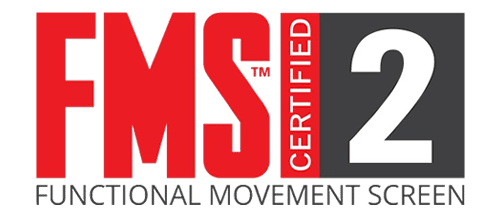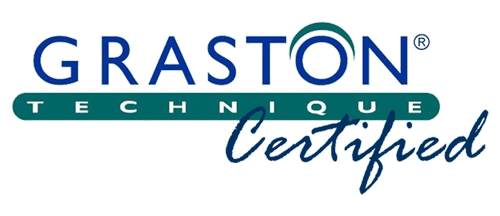Tennis Elbow
Click the white PLAY button to start video.
Tennis Elbow is a condition that results in deterioration of the tendon fibers that attach to the bone at the outside of the elbow. Tendons are strong fibers that attach muscles to bone. They are tissues that do not stretch easily and are susceptible to degeneration under repeated or traumatic stress. Another name for Tennis Elbow is Lateral Epicondylitis.
The pain of Tennis Elbow occurs primarily where the tendons of the forearm muscles attach to the elbow bone at the Lateral Epicondyle. Playing racquet sports is only one cause of Tennis Elbow. However, most individuals with Tennis Elbow participate in work or activities that require repeated use of the forearm muscles.
Read more about Tennis Elbow
Introduction
Tennis Elbow is a condition that results in deterioration of the tendon fibers that attach to the bone at the outside of the elbow. Tendons are strong fibers that attach muscles to bone. They are tissues that do not stretch easily and are susceptible to degeneration under repeated or traumatic stress. Another name for Tennis Elbow is Lateral Epicondylitis.
The pain of Tennis Elbow occurs primarily where the tendons of the forearm muscles attach to the elbow bone at the Lateral Epicondyle. Playing racquet sports is only one cause of Tennis Elbow. However, most individuals with Tennis Elbow participate in work or activities that require repeated use of the forearm muscles.

Anatomy
A tendon anchors the forearm muscles to the outer (Lateral) side of the elbow bone (Epicondyle). The forearm muscles, particularly one called the Extensor Carpi Radialis Brevis, work together to raise the hand at the wrist joint. These forearm muscles are called the “wrist extensors” because they allow the hand to move upward or extend, such as when making the hand motion for “stop.” Repeated use of the wrist extensors can cause microscopic tears in the tendon. Individuals with tendon tears or degeneration can develop forearm muscle weakness along with swelling and pain at the outside of the elbow.Causes
Tennis Elbow most commonly occurs in individuals between the ages of 30 and 50 years old. Tennis Elbow is caused by chronic stress to the forearm muscles, especially the Extensor Carpi Radialis Brevis. The repeated motions and stress can cause the tendon to degenerate (tendonopathy). As the name Tennis Elbow implies, playing tennis or other racquet sports is one cause of the condition--particularly, repeated use of the backhand stroke, forearm stroke, or serve with poor athletic form. However, most individuals with Tennis Elbow perform repetitive forearm motions as part of their jobs or recreational activities. Activities such as meat cutting, hammering, screwdriving, plumbing, painting, and weight lifting require steady powerful grasping and gripping movements. Playing the piano or using a keyboard place the hand in a raised position for a prolonged length of time. Additionally, many individuals develop Tennis Elbow for no identifiable reason.Symptoms
Individuals with Tennis Elbow frequently experience severe burning pain and tenderness at the outer side of their elbow and forearm. In most cases, the pain starts out slow and mild but gradually increases over weeks or months. The pain may increase with movement or when pressure is applied to the outer elbow area. Some individuals experience morning stiffness, muscle weakness, and aching throughout the day. They may be unable to perform the motions necessary to complete various tasks. Some individuals may even feel pain when they are not moving their arm.Diagnosis
A physician will perform an examination and review the individual’s medical and activity history to make a diagnosis of Tennis Elbow. The physician evaluates the forearm structures by using simple tests. The history and examination, supplemented with X-rays of the elbow are sufficient to make the diagnosis.
Magnetic Resonance Imaging (MRI) scans are rarely used to diagnose Tennis Elbow. X-rays may be used to assess if the elbow bone was injured and help rule out other possible causes of elbow pain, such as arthritis. When taking an x-ray, a camera focuses on the elbow area and a picture is taken. MRI scans may be used to provide a very detailed view of the tendon injury. The MRI equipment takes images by focusing on the elbow area. Both imaging techniques are painless and require that the individual remain very still.
Surgery
Following surgery, the elbow is placed in a small splint.
Treatment
You may be referred to a physical therapist. Your therapist may fabricate or issue a wrist splint or forearm band. The splints can help to relieve symptoms and promote healing. Your therapists will teach you specific exercises to increase your strength, endurance, coordination, range of motion, flexibility, and functional use of your arm. This is done in conjunction with modalities to increase blood flow and ease pain, such as heat, ice, ultrasound, electrical stimulation and massage.
If you undergo surgery, you will begin physical or occupational therapy soon after, to ease pain, improve range of motion, and promote healing. Muscle strengthening can begin several weeks after the surgery. Your therapists will teach you exercises to progressively improve your strength, endurance, coordination, and functional use of your arm. Most people are able to resume their full activities in four to six months.
Recovery
Tennis Elbow does not usually lead to severe problems if it is treated. If left untreated, it rarely leads to loss of motion and function.

Copyright © - iHealthSpot Interactive - www.iHealthSpot.com
This information is intended for educational and informational purposes only. It should not be used in place of an individual consultation or examination or replace the advice of your health care professional and should not be relied upon to determine diagnosis or course of treatment.
The iHealthSpot patient education library was written collaboratively by the iHealthSpot editorial team which includes Senior Medical Authors Dr. Mary Car-Blanchard, OTD/OTR/L and Valerie K. Clark, and the following editorial advisors: Steve Meadows, MD, Ernie F. Soto, DDS, Ronald J. Glatzer, MD, Jonathan Rosenberg, MD, Christopher M. Nolte, MD, David Applebaum, MD, Jonathan M. Tarrash, MD, and Paula Soto, RN/BSN. This content complies with the HONcode standard for trustworthy health information. The library commenced development on September 1, 2005 with the latest update/addition on February 16, 2022. For information on iHealthSpot’s other services including medical website design, visit www.iHealthSpot.com.






